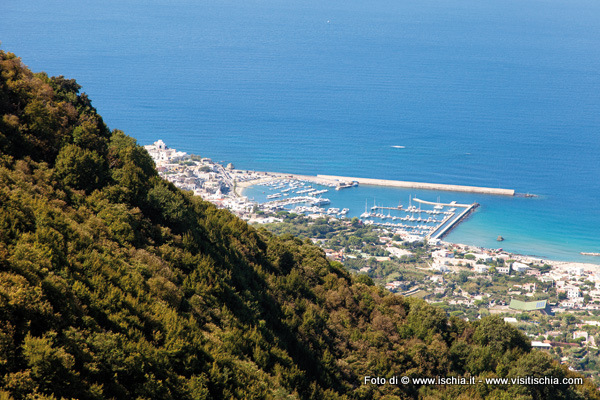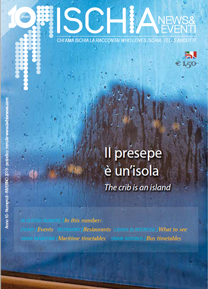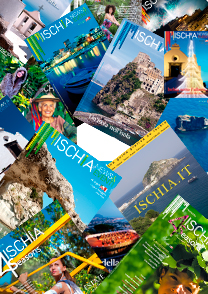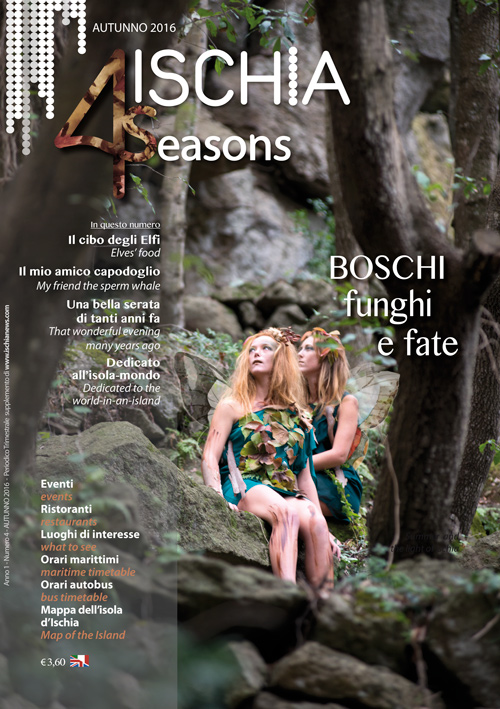Following the Stone Houses
 The fresh and crisp air, the smell of the wort that spreads and that refers to the past, when, before becoming tourist island, Ischia’s economy was mainly tied to the cultivation of the vine and wine production and going up the colors of the woods, make us realize that we have entered in the fall season and we are preparing to welcome it.
The fresh and crisp air, the smell of the wort that spreads and that refers to the past, when, before becoming tourist island, Ischia’s economy was mainly tied to the cultivation of the vine and wine production and going up the colors of the woods, make us realize that we have entered in the fall season and we are preparing to welcome it.
Of course the imagination of the walker of Ischia one of the best places that recalls the autumn period is the forest of the Falanga, a beautiful chestnut perfect place for collecting chestnuts and mushrooms. We want to tell it by a hike that is part of the programming of the festival “Il Contastorie” edition 2014 in the “I luoghi raccontano” in collaboration with the subsection of CAI (Italian Alpine Club) of Ischia.
The path, has followed part of an itinerary of the green tuff, a journey into the heart of the island, where the geo-sites, vegetation, and human history come together in a unique landscape colored by different shades of green and soaked of all the feelings that one may perceive. The nature of the seismic and volcanic island of Ischia has influenced over the centuries the stories of local people, forcing them to continuous adaptations to the territory. This meant that they develop an extraordinary testimony of rock-cut architecture, due to the long work of transformation of the green tuff boulders tumbled from the roads of Mount Epomeo. This complex is known with the name of “stone houses”. The complex structure of the territory involved, in addition, also an extensive network of connections (paths, mule tracks, steep stairs), often dug in the rock layers, while the cultivated land, consisting of terraces, being borne by a typical dry wall containment: the “parracine”.
And it is from here that we begin our story. We start from Serrara (at Il Bracconiere restaurant) and we continue to send us on a wild and fascinating landscape on the west side of the island (Forio), until getting to the Frassitielli wood (500 m), a terrace of thick acacia. In the wood, locust trees provide shade in the rocks covered with moss, lichens, and wild fennel. The undergrowth is the realm of the wild rabbit that has played and plays a key role in the local culinary tradition. Continuing along the path we reach the Falanga wood (600 m); hence the reality meets fantasy. In fact, in this forest of chestnut trees you can find the typical hole (the snow pit) and shelters carved into blocks of tufa precipitates from Epomeo, as a result of tectonic subsidence (the so-called Houses of Stone). We see even a millstone dug a huge boulder, evidence of a past in which wine was produced in that area. The journey continues through the woods to the location of Pizzone, where the sudden lack of vegetation announces the presence of fumaroles, volcanic phenomena traceable in different areas of the island and the testimony of a still active volcanic activity on our island. One of the most positive consequences of the volcanic activity on the island, still lingering is the presence of a large amount of natural geysers and stoves. Indeed deep heat is manifested on the island of Ischia in ‘fumarolic’ and hydrothermal activities that for a long time is exploited for therapeutic purposes and allows a form of tourism that develops year-round.
Climbing down we are again surrounded by a forest typical of the Mediterranean maquis, with an abundance of myrtle, heather, oak and arbutus and mastic that has led us to Crateca Estate, where we experienced a warm and welcoming atmosphere. Crateca is a very recent structure, recovered, in an exemplary manner, by the Castagna family that has revived the ancient buildings at the foot of Epomeo and all agriculture around them. This moment is certainly the perfect crowning of a good experience, shared with the islanders and tourists and that can help to reflect on the future choices with an eye to the tourism. We arrive finally at Via Crateca in Fango, also known as the Via dei Carri which has played an important role in the production and trade of alum of the island in the past. But that’s another story ...
TECHNICAL DATA OF THE ESXCURSION
Difference in height: 100 m
Downhill: 500 m
Duration: 4 ore | Difficulty: E
Development of the course: 7 km
Water: there are no fountains or springs along the way
Equipment required: hiking shoes and layered technical clothing
Recommended Additional Equipment: trekking poles
Appointment: Ristorante Bracconiere
Path (crossing): Serrara (Bracconiere restaurant 420 m), Frassitelli Wood (500 m), Falanga Wood (Stone Houses 600 m), Pizzone (300 m), Via Crateca (200 m), Fango (150 m) .










































